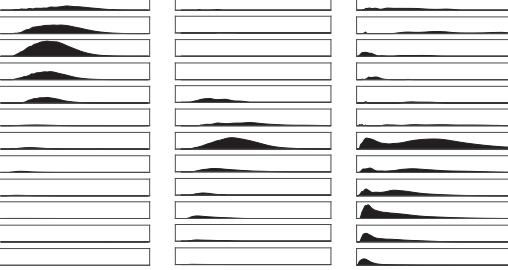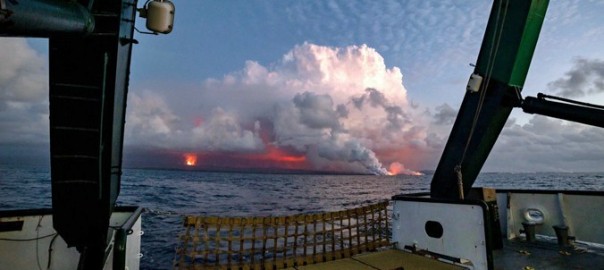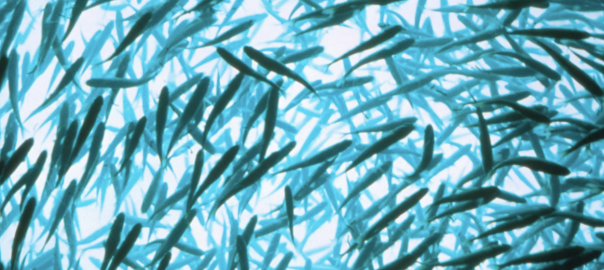Keisuke Inomura, Curtis Deutsch, Samuel T. Wilson, Takako Masuda, Evelyn Lawrenz, Bučinská Lenka, Roman Sobotka, Julia M. Gauglitz, Mak A. Saito, Ondřej Prášil, Michael J. Follows (2019), Quantifying Oxygen Management and Temperature and Light Dependencies of Nitrogen Fixation by Crocosphaera watsonii, mSphere, doi: 10.1128/mSphere.00531-19
Tag Archives: publication

Relating Marine Picoplankton Cell Size and Metabolism
Reporting by Helen Hill for CBIOMES
CBIOMES postdoctoral fellow John Casey is a Microbial Oceanographer who combines observations, experimental approaches, and computational methods to better understand the diversity of metabolic and physiological designs that influence biogeochemical cycles.
Continue reading Relating Marine Picoplankton Cell Size and Metabolism
Casey, J., K. Bjorkman, S. Ferron, D. Karl (2019), Size dependence of physiology and metabolism within marine picoplankton populations, Limnology and Oceanography, doi: 10.1002/lno.11153
Continue reading Size Dependence of Physiology and Metabolism within Marine Picoplankton Populations
Svetlana N. Losa, Stephanie Dutkiewicz, Martin Losch, Julia Oelker, Mariana A. Soppa, Scarlett Trimborn, Hongyan Xi, and Astrid Bracher (2019), On modeling the Southern Ocean Phytoplankton Functional Types, Biogeosciences Discussions, doi: 10.5194/bg-2019-289
Continue reading On modeling the Southern Ocean Phytoplankton Functional Types
Jann Paul Mattern, Christopher A. Edwards, Christopher N. Hill (2019), Dual number-based variational data assimilation: Constructing exact tangent linear and adjoint code from nonlinear model evaluations, PloS One, doi: 10.1371/journal.pone.0223131
Emily J. Zakem, Amala Mahadevan, Jonathan M. Lauderdale, and Michael J. Follows (2019), Stable aerobic and anaerobic coexistence in anoxic marine zones, The ISME Journal, doi: s41396-019-0523-8
Continue reading Stable aerobic and anaerobic coexistence in anoxic marine zones

Kīlauea Lava Fuels Phytoplankton Bloom off Hawaiʻi Island
A new study led by Samuel T. Wilson from the University of Hawai’i, co-authored with Darwin Project researchers John Casey, Stephanie Dutkiewicz, Mick Follows, Christopher Hill, and Oliver Jahn, uses the Darwin ecosystem model embedded within an MITgcm (~2 km) resolution regional physical model of the North Pacific Ocean to study how the input of silicic acid, iron, nitrate, and phosphate along the southeast coast of Hawai‘i impacts nearby phytoplankton productivity. Continue reading Kīlauea Lava Fuels Phytoplankton Bloom off Hawaiʻi Island
Dean Roemmich, Matthew H. Alford, Hervé Claustre, Kenneth Johnson, Brian King, James Moum, Peter Oke, W. Brechner Owens, Sylvie Pouliquen, Sarah Purkey, Megan Scanderbeg, Toshio Suga, Susan Wijffels, Nathalie Zilberman, Dorothee Bakker, Molly Baringer, Mathieu Belbeoch, Henry C. Bittig, Emmanuel Boss, Paulo Calil, Fiona Carse, Thierry Carval, Fei Chai, Diarmuid Ó. Conchubhair, Fabrizio d’Ortenzio, Giorgio Dall’Olmo, Damien Desbruyeres, Katja Fennel, Ilker Fer, Raffaele Ferrari, Gaël Forget, Howard Freeland, Tetsuichi Fujiki, Marion Gehlen, Blair Greenan, Robert Hallberg, Toshiyuki Hibiya, Shigeki Hosoda, Steven Jayne, Markus Jochum, Gregory C. Johnson, KiRyong Kang, Nicolas Kolodziejczyk, Arne Körtzinger, Pierre-Yves Le Traon, Yueng-Djern Lenn, Guillaume Maze, Kjell Arne Mork, Tamaryn Morris, Takeyoshi Nagai, Jonathan Nash, Alberto Naveira Garabato, Are Olsen, Rama Rao Pattabhi, Satya Prakash, Stephen Riser, Catherine Schmechtig, Claudia Schmid, Emily Shroyer, Andreas Sterl, Philip Sutton, Lynne Talley, Toste Tanhua, Virginie Thierry, Sandy Thomalla, John Toole, Ariel Troisi, Thomas W. Trull, Jon Turton, Pedro Joaquin Velez-Belchi, Waldemar Walczowski, Haili Wang, Rik Wanninkhof, Amy F. Waterhouse, Stephanie Waterman, Andrew Watson, Cara Wilson, Annie P. S. Wong, Jianping Xu and Ichiro Yasuda (2019), On the Future of Argo: A Global, Full-Depth, Multi-Disciplinary Array, Frontiers of Marine Science, doi: 10.3389/fmars.2019.00439 Continue reading On the Future of Argo: A Global, Full-Depth, Multi-Disciplinary Array
Andrea Storto, Aida Alvera-Azcárate, Magdalena A. Balmaseda, Alexander Barth, Matthieu Chevallier, Francois Counillon, Catia M. Domingues, Marie Drevillon, Yann Drillet, Gaël Forget, Gilles Garric, Keith Haines, Fabrice Hernandez, Doroteaciro Iovino, Laura C. Jackson, Jean-Michel Lellouche, Simona Masina, Michael Mayer, Peter R. Oke, Stephen G. Penny, K. Andrew Peterson, Chunxue Yang and Hao Zuo (2019), Ocean Reanalyses: Recent Advances and Unsolved Challenges, Frontiers of Marine Science, doi: 10.3389/fmars.2019.00418 Continue reading Ocean Reanalyses: Recent Advances and Unsolved Challenges

Artificial Intelligence Helps Manage Global Fisheries
Reporting by Helen Hill for the MIT Darwin Project
Fisheries provide a significant source of protein for over half of the world’s human population, yet the impacts of historical overfishing and climate change challenge the future productivity of the world’s oceans. Traditional fisheries management rests on the assumption that the future will look like the past, however, with advances in AI (artificial intelligence) and burgeoning data resources, scientists have new tools for exploring a greater range of future scenarios, including climate change. Continue reading Artificial Intelligence Helps Manage Global Fisheries